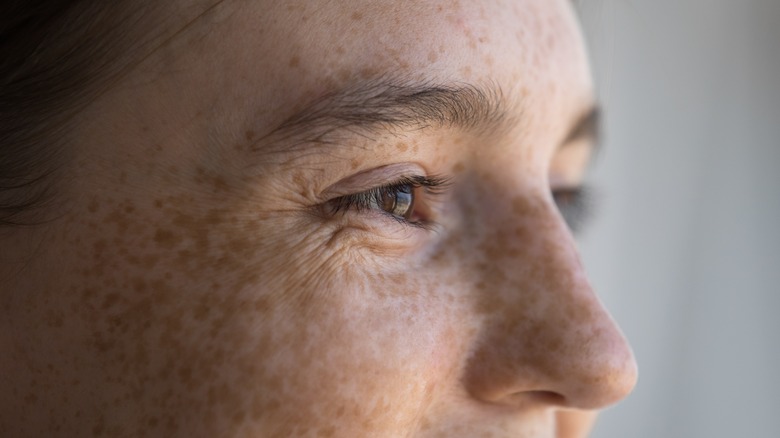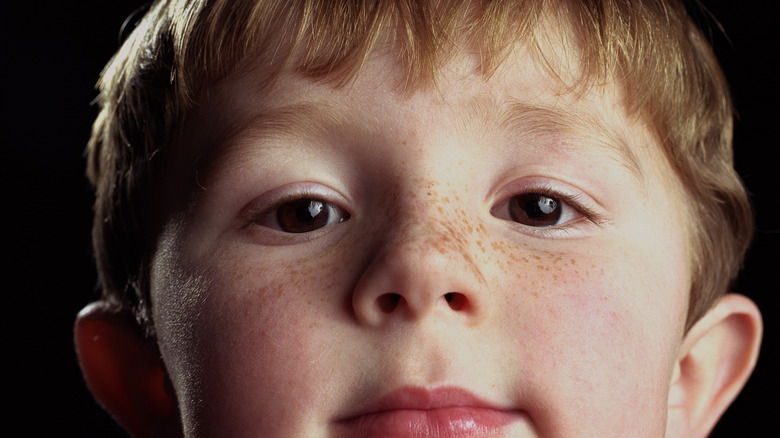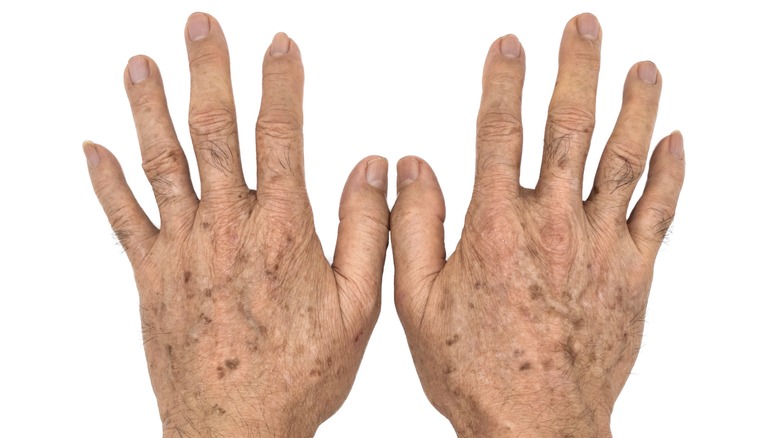What Are The Two Types Of Freckles?
A speckled splash of spots across the bridge of the nose and cheeks can be a dramatic and playful statement accomplished with makeup or temporary henna dyes. In fact, Allure notes that henna freckles, or small dot-sized stains left from henna, are one of TikTok's biggest beauty trends. However, for some individuals, those adorable little specks of sunlight occur naturally.
Freckles, WebMD explains, are actually areas of the skin where there is extra pigmentation. They are typically genetic and often appear early in childhood, though they can continue to multiply until an individual is into their 20s.
For the most part, the appearance of natural freckles is harmless. Healthline explains that factors like naturally red or blonde hair and lighter skin tones tend to be more present in individuals with freckles due to a different type of melanin production, pheomelanin. Not only does higher pheomelanin production put you at a greater risk for sunburn, but it also indicates that your skin is less protected against ultraviolet radiation.
While all freckles can look very similar, there are actually two different types you should know about.
What are ephelides?
The first type of freckles are referred to as ephelides. These are the most common type of freckles that form, as they are typically a result of sun exposure and ultraviolet radiation, per WebMD. When individuals make a reference to freckles, ephelides are the type that most often come to mind. They are usually described as small to medium, flat, irregular spots that can appear in shades of red, brown, and tan. Ephelides can become lighter during winter months when individuals spend more time indoors and darker when exposure to the sun occurs.
Healthline explains that they are also the type of freckles that can develop on anyone who doesn't use some form of protection when exposed to the sun. Though anyone can develop ephelides, they are more commonly found on individuals of Caucasian and Asian decent (via Cleveland Clinic). These types of freckles are typically found on the face, neck, backs of the hands, and arms of individuals, or areas of the body that have repeated exposure to sunlight. Ephelides can fade over time and with age.
What are solar lentigines?
The second type of freckles are called solar lentigines. The Cleveland Clinic explains that solar lentigines are also referred to as actinic lentigines, age spots, and liver spots. Unlike ephelides, solar lentigines begin to appear as you become older, with the average age of appearance beginning around 40. These spots can be yellow, reddish, light brown, or very dark brown. They are typically much larger than ephelides.
WebMD explains that solar lentigines are unlike ephelides in that they have clearer edges and borders. However, their appearance can also be a result of sun exposure as they typically begin appearing first on areas of the body which have had repeated sun exposure across a person's lifetime.
While freckles of both forms are typically not a concern, some people prefer to diminish or decrease their appearance or get rid of freckles altogether. Skin treatments like serums and chemical peels can often reduce the visibility of both ephelides and solar lentigines if desired. However, if freckles become raised, start to grow, or begin changing colors, you may want to consult your dermatologist.



